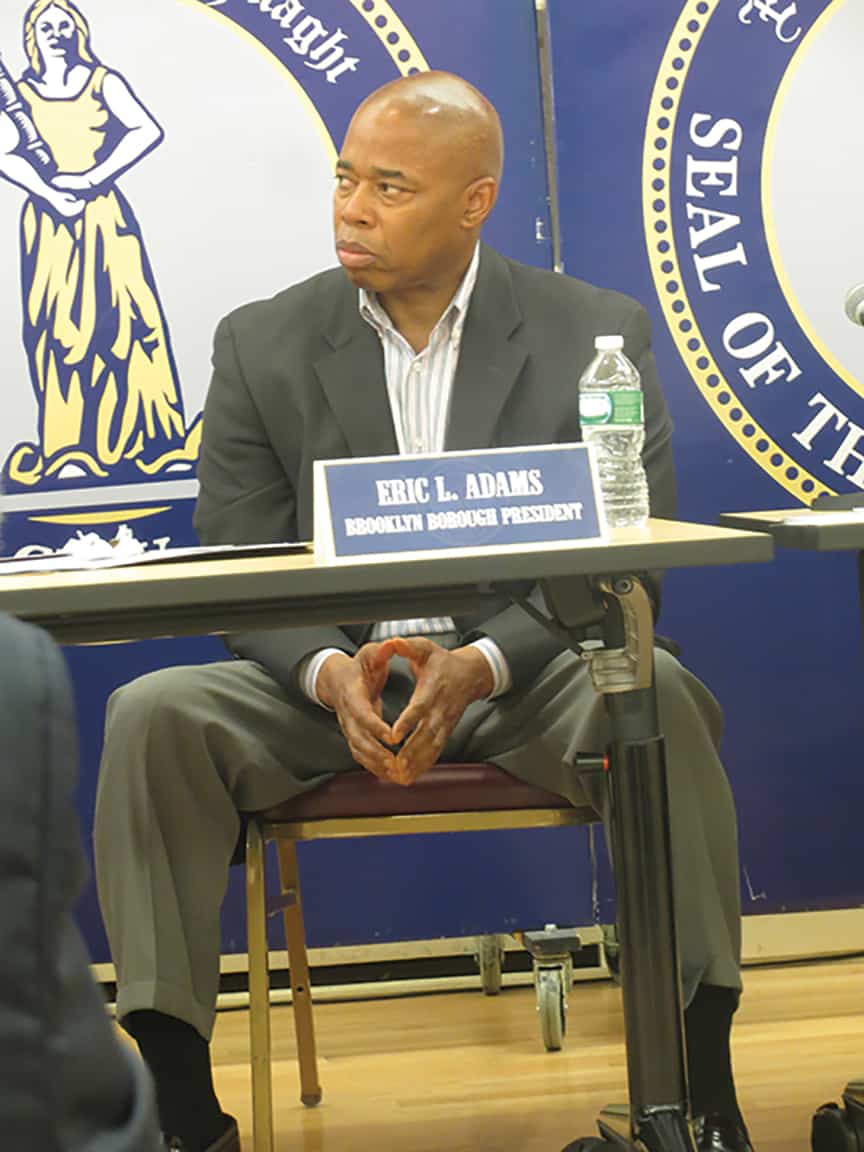The continuing saga of the attempt to build a nursing home in Red Hook continued last month, as the Borough President Eric Adams’ office published their opinion, and the City Planning Commission (CPC) held their public hearing. The next and presumably last step comes up next, as the City Council takes up Oxford Nursing Home’s application for a zoning change that is needed for them to start building.

The ULURP (zoning change) process – which began last year with the Department of City Planning approving the ULURP and Community Board 6 (CB6) voting in favor of the Oxford plan – traveled to Borough Hall last December, and to the CPC the last week in March.
CB6’s Land Use committee heard Oxford’s case twice. The second time, in Deember 2015, they voted against Oxford. But at a meeting of the full board, which usually follows committee recommendations, they flipped and supported Oxford.
Just before Christmas, a hearing at Brooklyn’s Borough Hall attracted both supporters and opponents of the plan. Oxford’s Red Hook supporters come mainly from the Red Hook East and West Tenant Association presidents, Frances Brown and Lillie Marshall. Their position is staked on promises that the nursing home will come with jobs for the neighborhood and a place for Red Hook’s elderly.
Opponents, who come mostly from residents living in the vicinity of the proposed home (across from the VFW), argue that the building is out of character for the neighborhood, would bring unwanted traffic and would be a hazard to the elderly as the land is in a flood zone.
Adams followed up with a smaller, private meeting at the Red Hook Library. At this meeting he was able to ask specific questions to many of the same people who had spoken at the public meetings. He listened carefully and respectfully to both sides, seeking additional input before preparing his report.
His decision was issued March 8, and recommended disapproval with conditions – meaning that he doesn’t think it is a good idea, but in case the City Council decides to go ahead with the zoning change and allow Oxford to build, he would like certain conditions met.
These conditions call for a furthering lowering of the building height, from between 50-75 feet, rather than the original 97 feet that the original plans called for; moving the proposed parking garage from Sullivan Street to King Street; coordination with DOT to direct traffic flow to the King Street side; and commitments to resilience and sustainability, and a guarantee of local and minority hiring.
There is no mention in the report of the availability of rooms for local elderly, a cause much championed by Frances and Hal Brown. This is most likely because according to state law, there can be no such guarantees, as pointed out by local elder-care lawyer, Robin Goeman.
The next step in the bureaucratic process is the CPC. Their public hearing, held in Manhattan, repeated the process already seen at CB6 and Borough Hall. About thirty people showed up to give testimony. According to John McGettrick, who is opposed to the out-of-scale character of the building, about half came to speak in favor, and half opposed. But after listening to the testimony, some of the people who had come to speak in favor of Oxford recanted, saying that what they heard in the public testimony was at odds with what Oxford had been telling them.
If the plan receives CPC approval, it then will go to the City Council for hearings and a full council vote. Councilmember Menchaca is on record as being opposed to building a nursing home facility in a flood zone. It is a council tradition to support the local representative in ULURP votes.
The Mayor can veto the Council’s decision, and that veto can be overridden by a two thirds vote of the Council.








